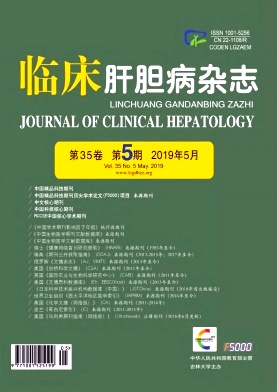|
[1] LASSEN K, COOLSEN MM, SLIM K, et al. Guidelines for perioperative care for pancreaticoduodenectomy:Enhanced RECOVERY AFTER SURGERY (ERAS®) Society recommendations[J]. Clin Nutr, 2012, 31 (6) :817-830.
|
|
[2] Chinese Research Hospital Association, Society for Hepatopancreatobiliary Surgery. Expert consensus for enhanced recovery after hepatobiliary&pancreatic surgery (2015 edition) [J]. J Clin Hepatol, 2016, 32 (6) :1040-1045. (in Chinese) 中国研究型医院学会肝胆胰外科专业委员会.肝胆胰外科术后加速康复专家共识 (2015版) [J].临床肝胆病杂志, 2016, 32 (6) :1040-1045.
|
|
[3] Chinese Society of Surgery, Chinese Medical Association;Chinese Society of Anesthesiology, Chinese Medical Association. Chinese consensus and clinical guidelines for enhanced recovery after surgery (2018 editon) [J]. Chin J Pract Surg, 2018, 38 (1) :1-20. (in Chinese) 中华医学会外科学分会, 中华医学会麻醉学分会.加速康复外科中国专家共识及路径管理指南 (2018版) [J].中国实用外科杂志, 2018, 38 (1) :1-20.
|
|
[4] JI HB, ZHU WT, WEI Q, et al. Impact of enhanced recovery after surgery programs on pancreatic surgery:A meta-analysis[J]. World J Gastroenterol, 2018, 24 (15) :1666-1678.
|
|
[5] BRAGA M, PECORELLI N, ARIOTTI R, et al. Enhanced recovery after surgery pathway in patients undergoing pancreaticoduodenectomy[J]. World J Surg, 2014, 38 (11) :2960-2966.
|
|
[6] AGARWAL V, THOMAS MJ, JOSHI R, et al. Improved outcomes in 394 pancreatic cancer resections:The impact of enhanced recovery pathway[J]. J Gastrointest Surg, 2018, 22 (10) :1732-1742.
|
|
[7] BAI XL, ZHANG XY, LU FY, et al. Application of enhanced recovery after hepatopancreatobiliary surgery:A single-center experience[J]. Chin J Dig Surg, 2016, 15 (1) :35-41. (in Chinese) 白雪莉, 张晓雨, 卢芳燕, 等.肝胆胰外科术后加速康复实施单中心经验[J].中华消化外科杂志, 2016, 15 (1) :35-41.
|
|
[8] BAI X, ZHANG X, LU F, et al. The implementation of an enhanced recovery after surgery (ERAS) program following pancreatic surgery in an academic medical center of China[J].Pancreatology, 2016, 16 (4) :665-670.
|
|
[9] LYU N, LU ZP, LI Q, et al. Application value of enhanced recovery after surgery in the pancreatic surgery[J]. Chin J Dig Surg, 2016, 15 (6) :547-551. (in Chinese) 吕楠, 陆子鹏, 李强, 等.加速康复外科在胰腺手术中的应用价值[J].中华消化外科杂志, 2016, 15 (6) :547-551.
|
|
[10] COOLSEN MM, BAKENS M, van DAM RM, et al. Implementing an enhanced recovery program after pancreaticoduodenectomy in elderly patients:Is it feasible?[J]. World J Surg, 2015, 39 (1) :251-258.
|
|
[11] KAMAN L, CHAKARBATHI K, GUPTA A, et al. Impact of enhanced recovery after surgery protocol on immediate surgical outcome in elderly patients undergoing pancreaticoduodenectomy[J]. Updates Surg, 2019.[Epub ahead of print]
|
|
[12] PARTELLI S, CRIPPA S, CASTAGNANI R, et al. Evaluation of an enhanced recovery protocol after pancreaticoduodenectomy in elderly patients[J]. HPB (Oxford) , 2016, 18 (2) :153-158.
|
|
[13] FISHER WE, HODGES SE, SILBERFEIN EJ, et al. Pancreatic resection without routine intraperitoneal drainage[J]. HPB (Oxford) , 2011, 13 (7) :503-510.
|
|
[14] CONLON KC, LABOW D, LEUNG D, et al. Prospective randomized clinical trial of the value of intraperitoneal drainage after pancreatic resection[J]. Ann Surg, 2001, 234 (4) :487-494.
|
|
[15] BEHRMAN SW, ZARZAUR BL, PARMAR A, et al. Routine drainage of the operative bed following elective distal pancreatectomy does not reduce the occurrence of complications[J]. J Gastrointest Surg, 2015, 19 (1) :72-79.
|
|
[16] WITZIGMANN H, DIENER MK, KIENKÖTTER S, et al. No need for routine drainage after pancreatic head resection:The dualcenter, randomized, controlled PANDRA trial (ISRCTN04937707) [J]. Ann Surg, 2016, 264 (3) :528-537.
|
|
[17] DIENER MK, TADJALLI-MEHR K, MEHR KT, et al. Riskbenefit assessment of closed intra-abdominal drains after pancreatic surgery:A systematic review and meta-analysis assessing the current state of evidence[J]. Langenbecks Arch Surg, 2011, 396 (1) :41-52.
|
|
[18] van BUREN G, BLOOMSTON M, HUGHES SJ, et al. A randomized prospective multicenter trial of pancreaticoduodenectomy with and without routine intraperitoneal drainage[J]. Ann Surg, 2014, 259 (4) :605-612.
|
|
[19] ZELGA P, ALI JM, BRAIS R, et al. Negative predictive value of drain amylase concentration for development of pancreatic fistula after pancreaticoduodenectomy[J]. Pancreatology, 2015, 15 (2) :179-184.
|
|
[20] SERENE T, G SV, PADMAKUMAR JS, et al. Predictive value of post-operative drain amylase levels for post-operative pancreatic fistula[J]. Ann Hepatobiliary Pancreat Surg, 2018, 22 (4) :397-404.
|
|
[21] ven FONG Z, CORREA-GALLEGO C, FERRONE CR, et al.Early drain removal—the middle ground between the drain versus no drain debate in patients undergoing pancreaticoduodenectomy:A prospective validation study[J]. Ann Surg, 2015, 262 (2) :378-383.
|
|
[22] STAUFFER JA, COPPOLA A, VILLACRESES D, et al. Laparoscopic versus open pancreaticoduodenectomy for pancreatic adenocarcinoma:Long-term results at a single institution[J]. Surg Endosc, 2017, 31 (5) :2233-2241.
|
|
[23] CORREA-GALLEGO C, DINKELSPIEL HE, SULIMANOFF I, et al. Minimally-invasive vs open pancreaticoduodenectomy:Systematic review and meta-analysis[J]. J Am Coll Surg, 2014, 218 (1) :129-139.
|
|
[24] CROOME KP, FARNELL MB, QUE FG, et al. Total laparoscopic pancreaticoduodenectomy for pancreatic ductal adenocarcinoma:Oncologic advantages over open approaches?[J]. Ann Surg, 2014, 260 (4) :633-640.
|
|
[25] DOKMAK S, FTÉRICHE FS, AUSSILHOU B, et al. Laparoscopic pancreaticoduodenectomy should not be routine for resection of periampullary tumors[J]. J Am Coll Surg, 2015, 220 (5) :831-838.
|
|
[26] ADAM MA, CHOUDHURY K, DINAN MA, et al. Minimally invasive versus open pancreaticoduodenectomy for cancer:Practice patterns and short-term outcomes among 7061 patients[J]. Ann Surg, 2015, 262 (2) :372-377.
|







 DownLoad:
DownLoad: